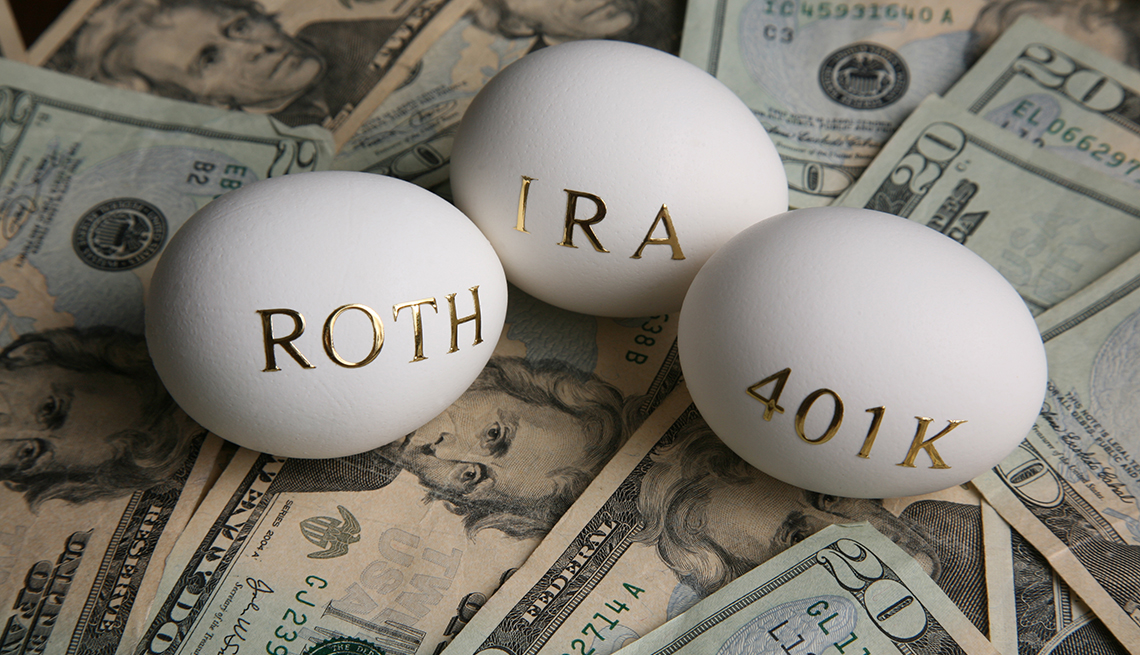Invest the Tax-Smart Way
Suze Orman's advice on retirement planning using Roth accounts
En español | If retirement planning sometimes feels like a nightmare, I’m here to tell you that a Roth individual retirement account (IRA) and Roth 401(k) are dreams come true. I think saving in Roths is, in most cases, much better than using traditional IRA or 401(k) accounts.
“Roth.” “Traditional.” I know these terms can get a bit mind-numbing. Understanding the difference is pretty simple: At some point you owe tax on retirement accounts.
With Roth accounts, you pay your tax bill at the beginning. The money you contribute is money you’ve already paid tax on. The big payoff is in retirement. Every penny you withdraw from a Roth account, once you’ve had it for at least five years, is totally tax free.
With traditional retirement accounts, you can typically deduct from your taxable income the contributions you make in a particular year. For instance, if you save $6,000 in a traditional 401(k) this year and your gross income is $60,000, your taxable income will drop to no more than $54,000. But in retirement you will get your tax bill. If you’re no longer working, by April 1 of the year after you turn 70½, you must start taking withdrawals from your 401(k), known as the required minimum distribution (RMD). (You also have to start taking withdrawals from a traditional IRA on the same schedule, whether or not you’re still working.)
Every penny you pull out of a traditional account is taxed as ordinary income. If you don’t pull out your full RMD, you’ll pay a 50 percent penalty tax on the amount you should have taken out but didn’t. But with a Roth IRA — a Roth 401(k) has different rules — guess what? You never have to take out the money if you don’t need it. That’s a big deal, people.
I’ll bet you’ve heard that if you’re now in a high tax bracket and you think your tax rate will be much lower in retirement, you should use a traditional IRA or 401(k) account because it’s so great to get the tax break today.
My issue with that theory is that it's impossible to know for sure what individual tax rates will be 10 or more years from now.
Do you really think brackets are going to stay low, given the deficits we’re carrying? Really?
Plus, a Roth gives you incredible financial flexibility. I believe paying off your mortgage before you retire is the key to a successful retirement. If you intend to use money in traditional retirement accounts to pay off a mortgage, you’re in for some serious tax pain.
Let’s assume you need $100,000 to pay off your mortgage. Chances are you’d need to pull $130,000 or so out of your retirement accounts to net $100,000 after paying federal and local income taxes (assuming you live in a state with an income tax).
Also, think about caring for your older self. At some point you may want — or need — to have more help. If you don’t have long-term care insurance, or if your LTC benefits haven’t kicked in yet, you may have to pull an extra few thousand dollars a month out of your traditional accounts, which creates the same tax crunch.
And if your taxable income rises in retirement, this can affect whether (or how much) your Social Security benefit will be taxed and the Medicare premium you will be charged.
Having some money in Roth accounts gives you the ability to use your retirement funds without paying any additional taxes. One more advantage with a Roth over a traditional account is that your beneficiaries will love you even more than they do now. If you opened your Roth at least five years before your death, your beneficiaries can withdraw money you leave them via this account completely tax free — not the case with a traditional IRA. Again: That’s a big deal, people.
The Roth 401(k) option has been around for only a bit longer than a decade. About 70 percent of employer-sponsored retirement plans now offer a Roth, and the number increases every year. If your plan doesn’t have this option and your employer matches your contribution, I still suggest you put money into a traditional plan to get that matching contribution, then use a Roth IRA for additional retirement savings. If your employer doesn’t match your contribution, fund your Roth fully before you think about contributing to your 401(k). The maximum allowable Roth IRA contribution per person age 50-plus in 2018 is $6,500, though, depending on your income, your limit may be lower or you may not be permitted to contribute at all. (For starters, you can’t contribute an amount that’s greater than your taxable earnings. Additionally, if you are married and filing jointly, the amount you can contribute in 2018 starts declining if your modified adjusted gross income is at least $189,000; if it’s $199,000 or more, you can’t contribute at all. For singles, the contribution limit starts falling at $120,000 and hits zero at $135,000.)
Another point: Are you in the armed forces or a civilian employee of the federal government? Since 2012, you’ve had a Roth option, too, as part of the government’s Thrift Savings Plan. Take advantage of it!
In my opinion, a Roth is the way to go, hands down.


